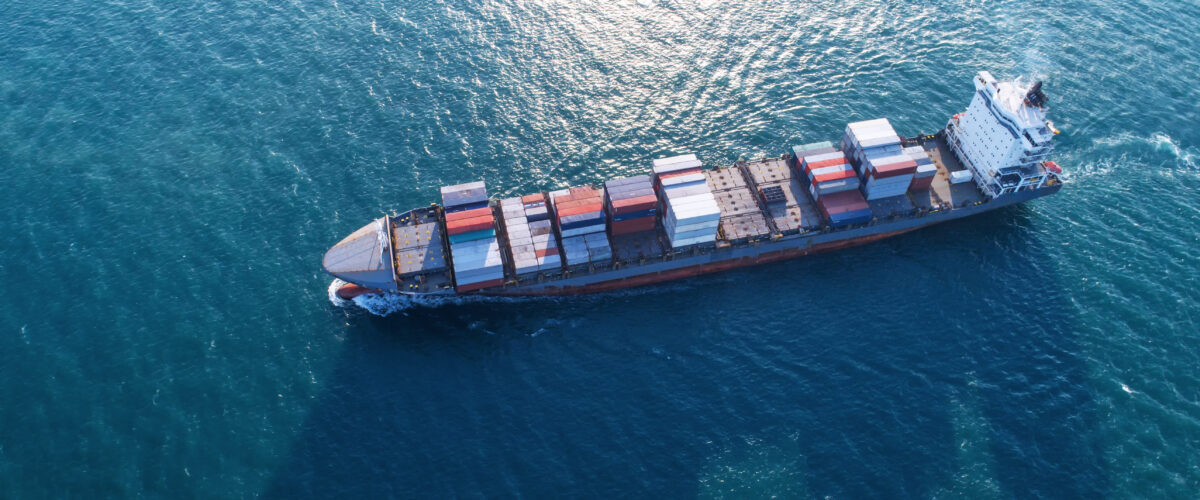Article | 22 May 2018
Article 9(4) of the EU’s trade mark regulation regarding European customs’ seizure of counterfeit goods in transit

Article 9(4) of Regulation (EU) 2017/1001 of the European Parliament and of the Council of 14 June 2017 on the European Union trade mark, which came into force on 1 October 2017, is a complete turnaround from the Court of Justice’s latest ruling on European customs’ seizure of such goods in transit. However, will it provide sufficient protection for proprietors in their struggle to stop counterfeit goods in transit?
Goods in transit – possible counterfeits or not?
Vast amounts of goods arrive at EU border controls every day. Checks have to be performed quickly and efficiently in order to attract trade with the EU, while at the same time maintaining good standards in safeguarding the security and legality of products that cross the EU border. Counterfeit products account for up to 5% of all EU imports, worth up to EUR 85 billion, according to the EUIPO-OECD study from April 2016 ‘Trade in Counterfeit and Pirated Goods: Mapping the Economic Impact.’
Problems can occur when suspicions arise that, despite information about a final destination outside the EU, goods in transit will be released for free circulation within the Union’s borders. A trade mark holder would naturally want to prevent goods that are counterfeits of their own trade mark-protected products from being released onto the internal market, where they can be distributed without controls within the borders of the Union. As trade marks are territorial rights, infringement will only be found if the allegedly infringing use occurs in the territory where the trade mark is protected. For some time it was unclear whether counterfeit goods merely in transit entering EU territory were to be regarded as infringing under European trade mark law.
The European Court of Justice has taken a stance on the issue in a number of preliminary rulings. The case law, however, has been inconsistent and the latest judgment, the Nokia/Philips case from 2011 (Joint cases C-446/09 and C-495/09, 1 Dec.2011) , was a great disappointment for proprietors. The court held that as long as the proprietor does not prove that the goods in transit suspected of being counterfeits will be placed on the internal market, there is no possibility for customs to detain the goods. Consequently, a fake was not a fake if it was not for sale within the EU.
Article 9(4)
Before the reform of the trademark system in 2015, the EU institutions heeded the criticism that arose after the European Court of Justice’s judgments. This resulted in article 9(4), now implemented in Regulation (EU) 2017/1001 on the European Union trade mark which came into force on 1 October 2017. To put it mildly, article 9(4) is a major deviation from previous case law.
Following the introduction of article 9(4), transit goods will no longer have to be intended for the internal market for them to be detained by customs. Proprietors’ rights have been extended, enabling them to take action against counterfeit goods based on the mere fact that the goods are located within the customs union when under a transit procedure. Consequently, a proprietor does not have to prove a sale or an offer for sale in the EU in order to obtain their detention.
However, there is a possibility for the accused holder of the goods to defend their right to transit by proving that the proprietor of the EU trade mark is not entitled to prohibit the marketing of goods in the country of final destination. The burden of proof that was placed on the proprietor in the Nokia/Philips case has now been reversed and been placed on the holder of the goods. Accordingly, a holder of goods accused of transiting counterfeit goods to be marketed within the EU has to prove that the goods are destined for a third country outside the EU, in which the owner of the trade mark invoked has no right to trade mark protection.
Our analysis of article 9(4)
While article 9(4) has been welcomed by European trade mark proprietors, it has also raised concerns that it goes too far and may clash with international norms such as article V of GATT, which obliges WTO members to safeguard the freedom of international trade. The WTO has been critical towards scrutinising European customs’ detention of goods border controls ever since EU law was accused of violating international trade obligations in 2011 after European customs officials confiscated Indian generic medicines in transit allegedly violating European patent rights.
In addition, article 9(4) only applies to trade mark infringement, in contrast to the infringement of other intellectual property. This may lead to an unsatisfactory difference of treatment between goods bearing a trademark and other goods (e.g. a good bearing a patent or a geographical indication). For these latter goods, the Nokia/Philips case still applies, which means that goods in transit may only be detained by the relevant customs authorities if it can be shown that the products are counterfeit and that they were or will be subject to trade within the EU, or where it is apparent from documentation or correspondence concerning the goods that their diversion to the market of the Union is envisaged, without the authorisation of the right holder.
Two opposing interests can be identified in the discussion regarding article 9(4): the interest of protecting the overall function of trade marks and proprietors’ innovation and creativity versus the interest of promoting free trade and maintaining EU’s role as an international trade hub.
The global market, e-commerce and the rapidly growing cross border trade are great challenges for trade mark proprietors who wish to protect their trade marks against counterfeit goods. As the European Court of Justice has not yet had the chance to rule on article 9(4) in Regulation (EU) 2017/1001, the question remains, what effect will it have for proprietors defending their rights against infringers using the transit system?
Although article 9(4) has received some criticism, we believe the possibilities for trade mark holders to take action against counterfeit goods in transit have been considerably improved, mainly because of the reversed burden of proof that is now placed on the holder of the goods. Although the provision raises some uncertainty, it is our hope and belief that article 9(4) will constitute a new effective weapon in the fight against the counterfeit industry.
For more information about article 9(4) of EU’s trademark regulation and its possible impact on proprietors’ fight against the counterfeit industry, see Nya artikel 9(4) EUTMR och tullens ingripanden mot förfalskade varor i transit by Ebba Svenburg, published in Nordiskt Immateriellt Rättsskydd 3/2017.


